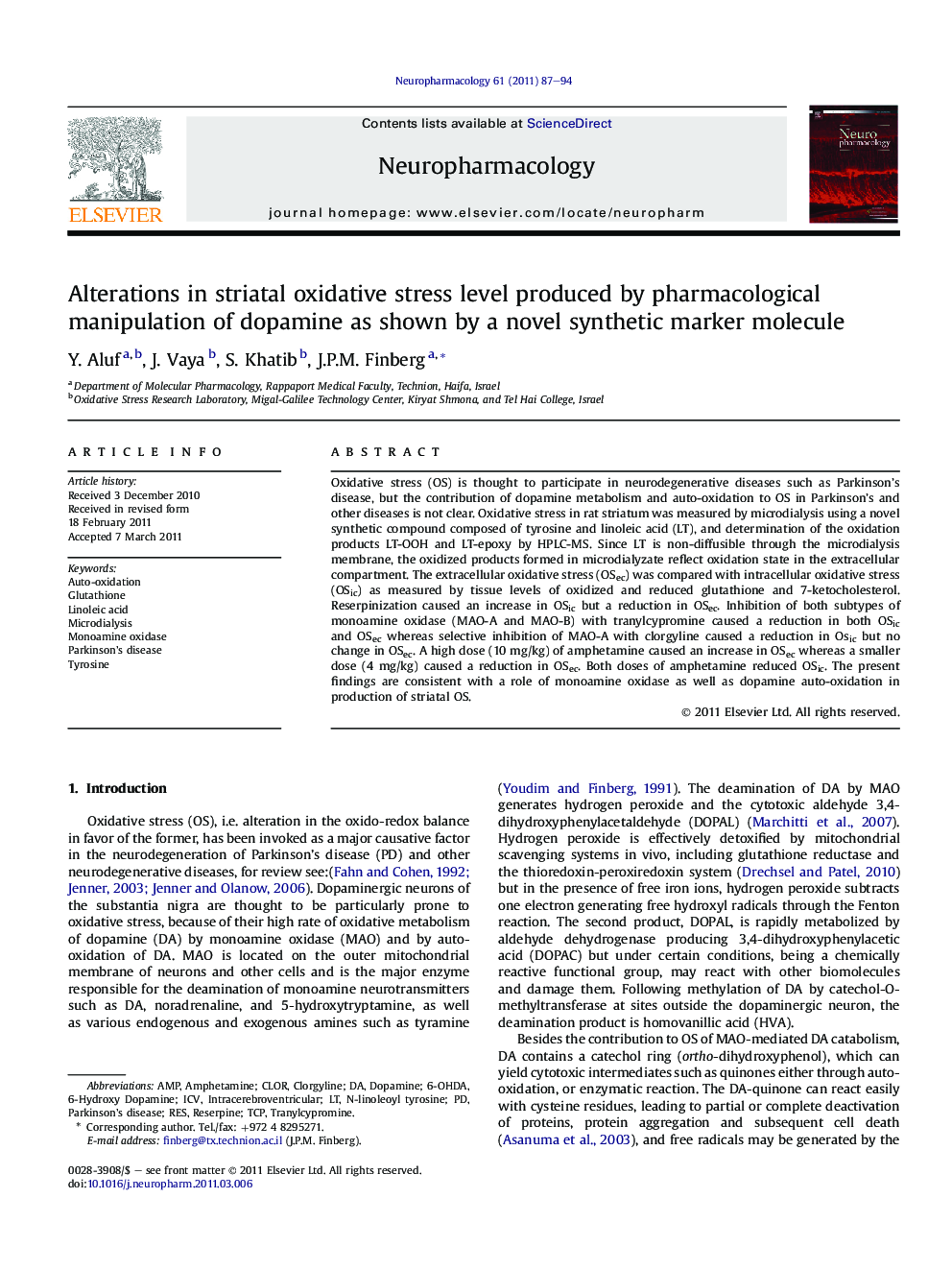| Article ID | Journal | Published Year | Pages | File Type |
|---|---|---|---|---|
| 2493634 | Neuropharmacology | 2011 | 8 Pages |
Oxidative stress (OS) is thought to participate in neurodegenerative diseases such as Parkinson’s disease, but the contribution of dopamine metabolism and auto-oxidation to OS in Parkinson’s and other diseases is not clear. Oxidative stress in rat striatum was measured by microdialysis using a novel synthetic compound composed of tyrosine and linoleic acid (LT), and determination of the oxidation products LT-OOH and LT-epoxy by HPLC-MS. Since LT is non-diffusible through the microdialysis membrane, the oxidized products formed in microdialyzate reflect oxidation state in the extracellular compartment. The extracellular oxidative stress (OSec) was compared with intracellular oxidative stress (OSic) as measured by tissue levels of oxidized and reduced glutathione and 7-ketocholesterol. Reserpinization caused an increase in OSic but a reduction in OSec. Inhibition of both subtypes of monoamine oxidase (MAO-A and MAO-B) with tranylcypromine caused a reduction in both OSic and OSec whereas selective inhibition of MAO-A with clorgyline caused a reduction in Osic but no change in OSec. A high dose (10 mg/kg) of amphetamine caused an increase in OSec whereas a smaller dose (4 mg/kg) caused a reduction in OSec. Both doses of amphetamine reduced OSic. The present findings are consistent with a role of monoamine oxidase as well as dopamine auto-oxidation in production of striatal OS.
► Striatal extra- and intra-cellular oxidative stress (OSec, OSic) was determined. ► Reserpinisation reduced microdialyzate dopamine, increased OSic but reduced OSec. ► Tranylcypromine reduced both OSec and OSic despite increasing microdialyzate dopamine, clorgyline decreased OSic. ► Amphetamine reduced OSic but increased OSec in a 10 mg/kg dose. ► MAO and extracellular dopamine contribute to OSec determined by novel technique.
